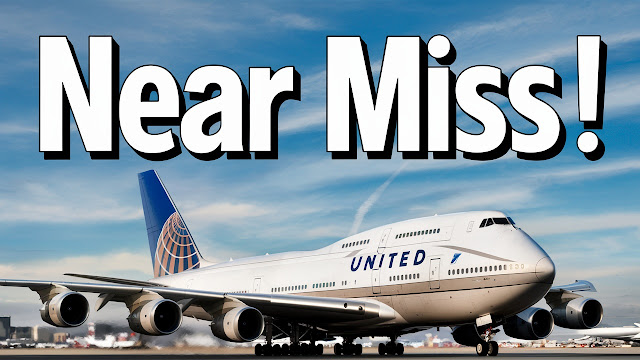Boeing 747 Breaks Up Just After Takeoff | Falling Apart Over Hawaii | United Airlines Flight 811
On this very "routine" night in 1989, United Airlines Flight 811, a Boeing 747 in service for flying from Honolulu, Hawaii, to Auckland, New Zealand, produced one terrible tragedy shortly after takeoff. What should have been nothing more than a routine flight would turn into a nightmare shared by the passengers and crew: the plane would literally disintegrate in mid-flight, a scenario in which one naturally wonders how such an awful disaster could have happened.
The Accident: An Explosive Surprise in the Sky
United Airlines Flight 811 was one of the flights taking off from Honolulu International Airport on February 24, 1989. En route to the designated cruising altitude, about 16 minutes into the flight, it was met by an explosion that ripped through the fuselage-the explosive decompression-of a cargo door in the forward section, which had blown open, tearing a gaping hole in the aircraft's side.
This instantly sent the passenger cabin tearing apart, shooting nine passengers from their seats into the open sky. In a flash, life was lost. The oxygen masks deployed due to the depressurizing cabin. Passengers scrambled madly, reaching for whatever they could get ahold of as the freezing, high-altitude air came in.
How It Happened: The Faulty Cargo Door
Subsequent investigation concluded that the probable cause of this disaster was a design defect in the mechanism employed for latching cargo doors. The forward cargo door had indeed been inadequately secured, but as a result of electrical failures, the cockpit indicators erroneously indicated that the door was locked. These defective latches buckled under the pressure differential during ascent, which allowed the door to blow open violently.
This sudden decompression led to the partial disintegration of the aircraft. The gaping hole near the front sucked seats, debris, and people out of the cabin.
Heroic Response by the Crew
The flight crew was incredibly composed in this horrified circumstance. Captain David Cronin immediately began to descend the plane to a safer altitude, where passengers could breathe without supplemental oxygen; he had been flying for years and was only a few flights away from retirement. The crew quickly assessed damage, worked with air traffic control, and prepared for an emergency landing back in Honolulu.
The heroic flight attendants themselves were thrown into the chaos, never stopping in an attempt to comfort passengers, help the injured, and secure the cabin as best they could. Quick actions on their part saved lives and prevented further injuries as the damaged plane made its way back to Hawaii.
The Emergency Landing
With much of the fuselage gone and the aircraft severely compromised, Captain Cronin skillfully returned the Boeing 747 to Honolulu for the emergency landing. His cool demeanor and flying skills under such a catastrophic situation were simply heroic. Miraculously, the plane touched down safely, with the remaining passengers and crew evacuating in record time.
In all, 346 survived the accident. Unfortunately, nine passengers whose seats were in the portion of the fuselage where the hole was formed lost their lives.
Lessons Learnt and Changes Made
The accident introduced wide-ranging changes in aircraft design and safety. Investigation results showed that the latching mechanism of the cargo door was susceptible to failure; major redesigns were made so as not to experience such an incident in the future. Airlines also clamped down on more rigorous checks and maintenance routines for all cargo doors and cabin pressurization systems.
The bravery of the crew, and especially Captain Cronin, underscored how important training and calmness are during pressure. No doubt, their quick thinking saved lots of precious lives and became testimony to airliner crews around the world about resilience and professionalism.
Conclusion: A Tragic Yet Transformative Event
The unfortunate story of United Airlines Flight 811 remains a grim reminder that even in the most mundane of conditions, a disaster can strike anytime with any aviation incident. While doing so, it underlines just how crucial both design improvements and crew training can make a potentially disastrous event into a story of survival. To those who lost their lives, it was tragic; in terms of flying for everyone, the resultant disaster brought about some necessary changes.
United Flight 811 can never be forgotten, certainly because of the loss of life but equally for the heroic efforts that saved hundreds more.




Comments
Post a Comment